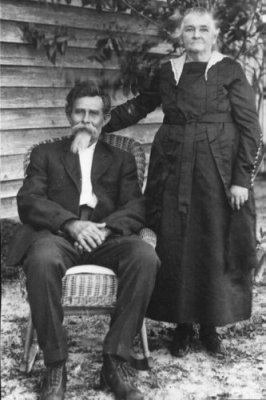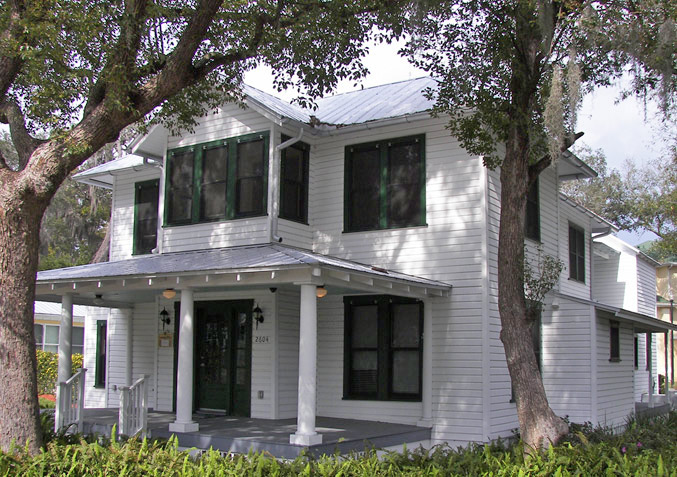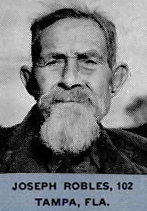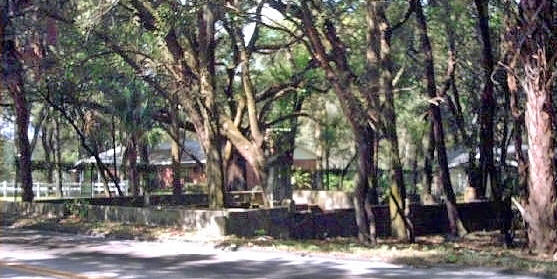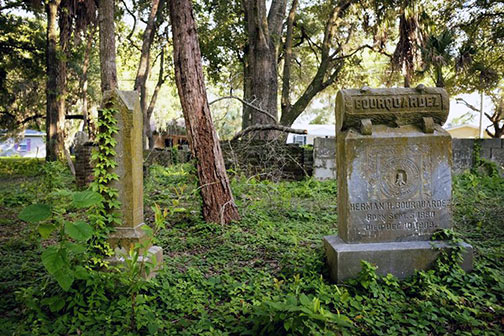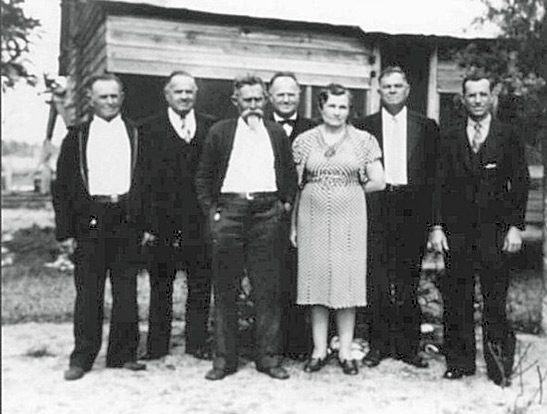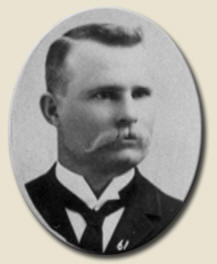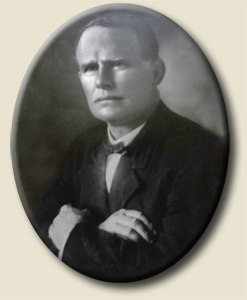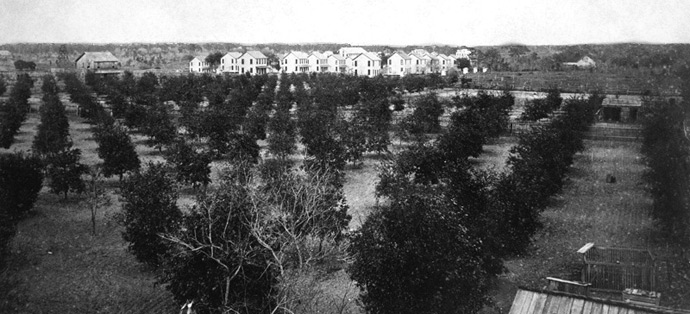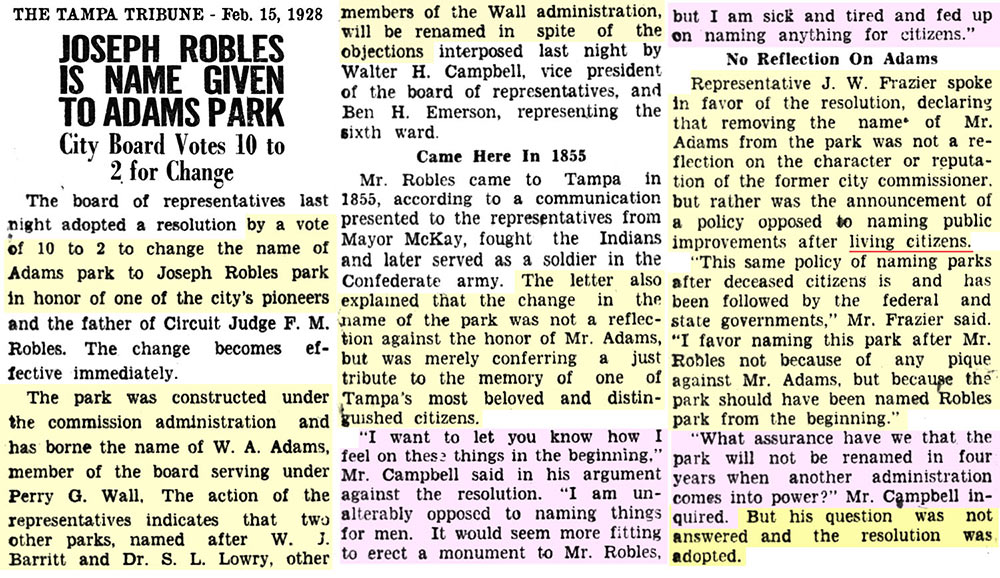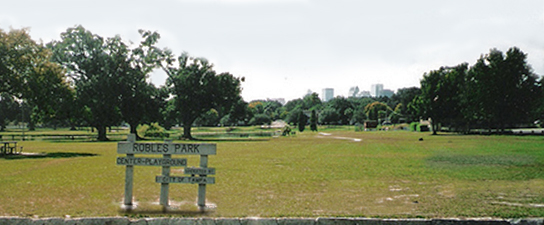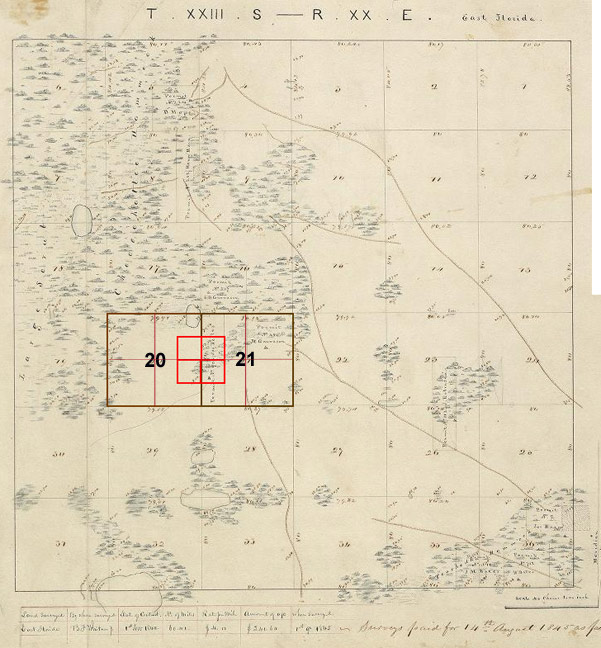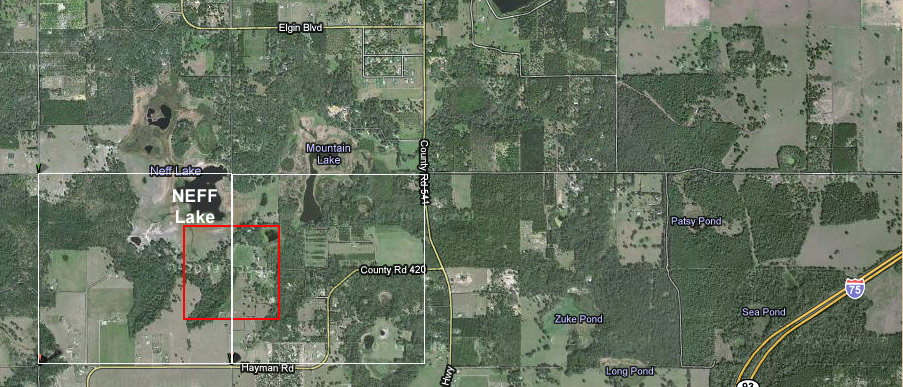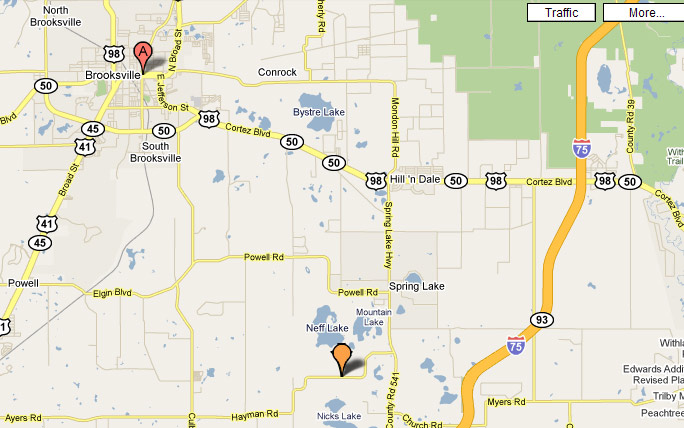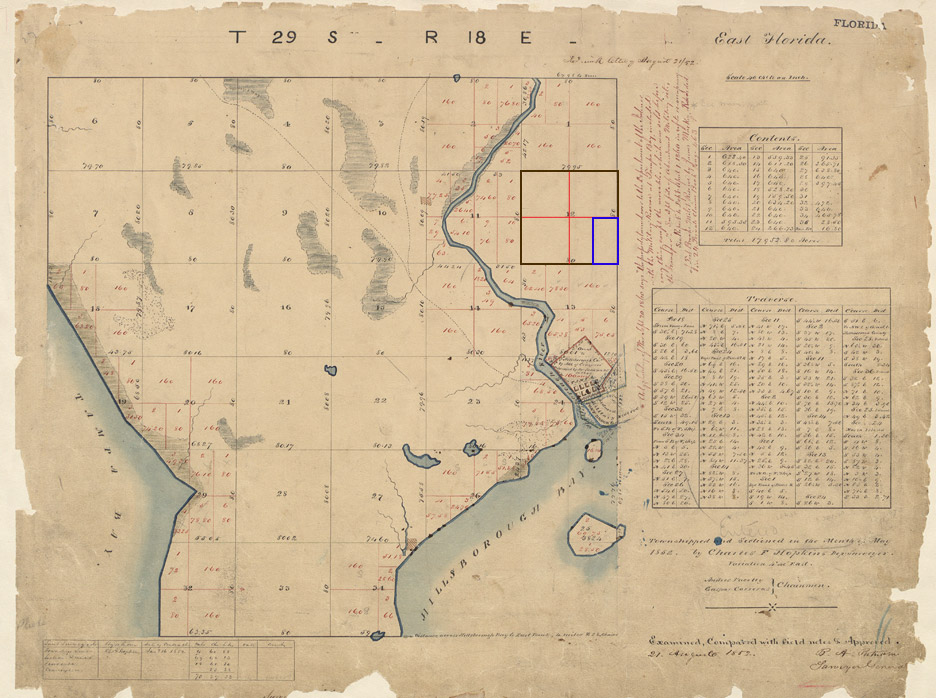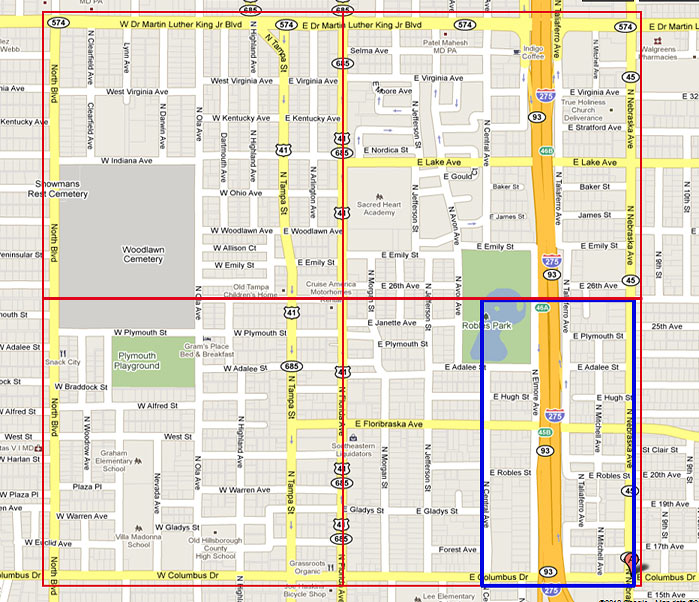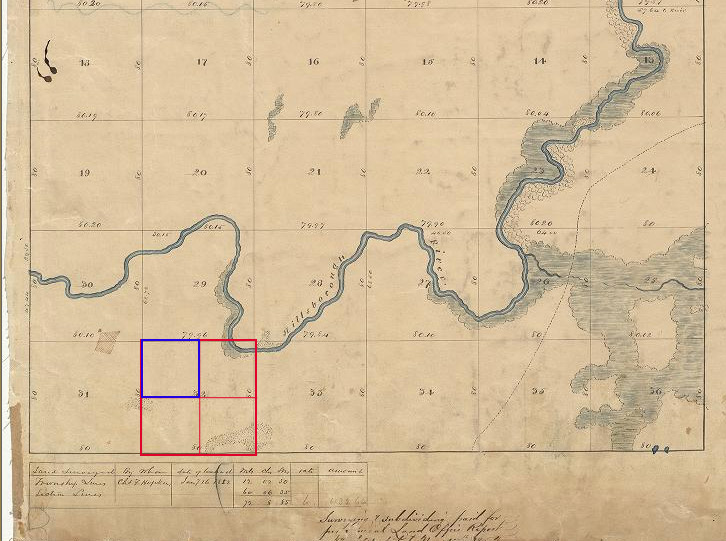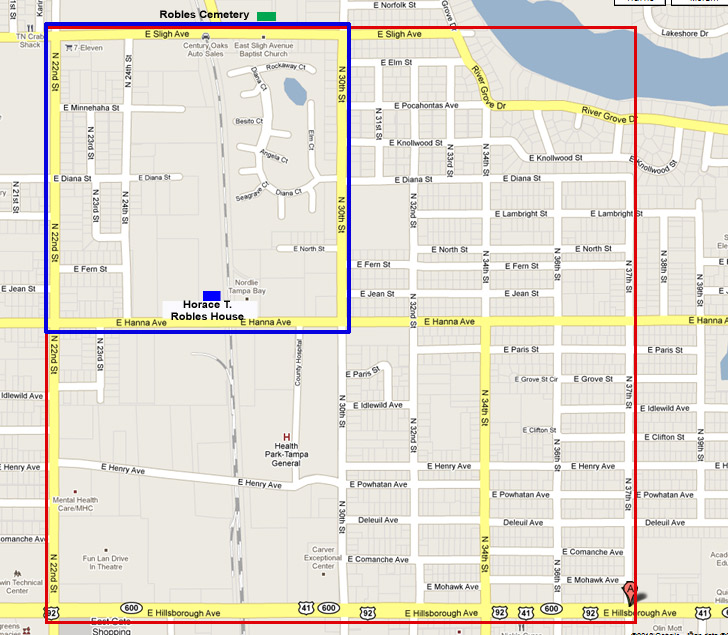|
THE ROBLES FAMILY (pronounced RO-bless) |
|||
|
Joseph married Mary Ann
Garrison on December 12, 1841 at Ft. Fanning, Florida. Mary Ann was
born on February 15, 1827 in Effingham County, Georgia. She was the
daughter of Michael Garrison and Mary Zetour. See Hernando Co. land patent location Robles and his family moved to Hillsborough County in the 1850s and in 1878, Joseph Robles purchased 80 acres from the Federal government, around what is now known as Robles Park in Tampa. See Hillsborough Co. land patent location Joseph Robles made significant contributions to this area during his lifetime, which earned him the honor of having his name commemorated on the park and also a nearby elementary school. At age 84, he was described as "a hale and hearty old man with hardly a gray hair to his head." Joseph died in 1907 at the age of 89. Mary Ann Garrison Robles died from pneumonia on April 19, 1886 and was buried in the Old Robles Cemetery and was later reinterred in Mary Robles Tanner's plot in Woodlawn Cemetery.
|
|||
According to a descendant,
The land was covered in orange and citrus groves. At that time, Robles Lake was only a large pond on a portion of the larger homestead. Mary Louise Smith, a descendant of Joseph Robles, remembers, "It’s a lake now; they used to call it a pond when I was growing up. I had always heard of Robles Pond. But, it wasn’t even part of the city, of course. It was fifteen miles from the city, then." Mary Louise and her sister, Ruth, two of the three daughters of John Horace Robles and Mattie Platt-Robles, were raised along the shores of Platt Lake in the northern part of Hillsborough County. The sisters are not only a part of the Robles family, but of the equally long-standing Platt family. Ruth’s husband, Murray, is a member of the Meares family, another Tampa family with deep roots. These three are not only descendants of three very important families to the history of Tampa, but their families are closely related by blood and friendship. Joseph was a small man of about 5 foot 4 inches and of small build with blue eyes. He fought during the Seminole War (1835-1842) and helped to defend a Tampa salt works plant from Yankee soldiers during the Civil War. It is said Joseph made a statement at the beginning of the Civil War that he did not agree with fighting against the country he had pledged to support but he had to follow the state in which he resided. Joseph is credited with spotting a Yankee gun ship coming in while standing guard.
In the fall of 1864, Joseph Robles had just finished his stint as a Confederate scout, having been wounded and sent home. Instead of ceasing his war efforts, he joined the home guard--a civilian auxiliary. Robles was standing watch near a salt works owned by the Confederate government, located on McKay Creek. Union gunboats had previously destroyed it and locals had rebuilt it when they could. The salt works were under the jurisdiction of Captain James McKay, Sr., the Commissary Agent of the district of Florida. A small detachment guarding the works was away at the time when Robles, superintendent of the plant, spotted a Federal gunboat as it entered the bay and anchored about a mile offshore. A landing party in a small boat approached, presumably to see whether the salt works had been restored. Robles, a wiry man, hid in a big boiler and waited. As the Union soldiers came ashore, Robles shouted orders from inside the boiler and fired his 10-gauge shotgun into the group just as they landed. As he began firing, he shouted orders from inside the boiler, to imaginary companions. The enemy assumed there must be a strong force strategically concealed in the brush. Accounts vary as to how many if any soldiers were killed or wounded, but there's no doubt that Robles disarmed the remaining Yankees. Out of ammunition and his shotgun empty, the 135 pound Spaniard victoriously marched the eight captured Union soldiers through the town of Tampa and delivered them to the Confederate Commander's headquarters in the old Orange Grove Hotel. His Civil War stunt is his most spectacular contribution proving he was extremely brave and perhaps a bit zealous about his home. Joseph apparently was a very talented man, being accomplished as a surveyor, farmer, and builder. He received a homestead land grant and added to it until he owned many acres along the Hillsborough River. Joseph joined the Methodist Church and it is said that he would not allow his children to learn Spanish nor attend a Catholic Church. One story was told about his leaving Spain in order to avoid becoming a priest. Robles’ productive and pioneering spirit drove him to organize volunteers for the building of roadways such as Florida Avenue, which made more land accessible for sale after the Civil War. Descendant Mary Louise Smith remembers: “He opened the road which is now Florida Avenue; he opened it with some of the other men who lived down there, with the City of Tampa’s permission, out to Columbus Drive where the lake is. He opened the first road that is now Florida Avenue. They got the horses and mules and hauled out all the trees and made a road. Always been Florida Avenue since then.” Robles spirit also drove him to experiment with growing different types of citrus and various other fruits and vegetables to diversify his crop selection. He is credited with growing the first avocados in Hillsborough County. Children of JOSEPH ROBLES and MARY
GARRISON |
|||
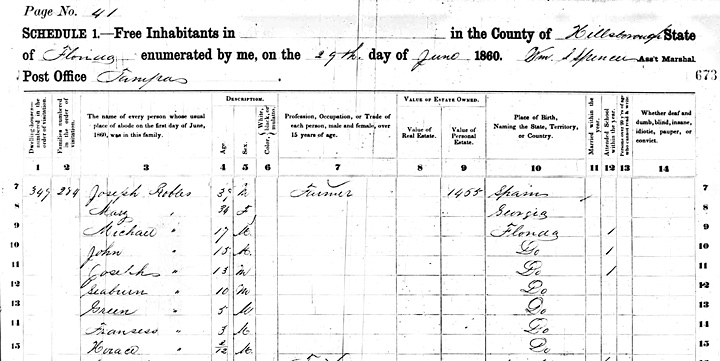
1860 Federal Census of Tampa, Joseph Robles and wife
Mary with 7 sons:
Michael, John, Joseph, Seaburn, Green, Francis and Horace.
|
|
Joseph Paul Robles When Joseph Paul Robles was old enough to shave, he made it his decision to be fashionable and decided to grow a goatee. It never left his chin and waggled through many a fascinating stories throughout his years. Joseph P. Robles was born Feb. 14, 1847 in Bennett County, Florida, which later was absorbed by Hernando County after it was created from a part of Hillsborough County. He was 14 when the Civil War started. At 16 he joined the Florida militia and at 17, the regular Florida militia troops. Most of his war service was spent guarding the Confederate cotton boats along the Gulf Coast. He witnessed the Yankee gunboats just off where Davis Islands are now, maintaining their constant vigil against southern efforts to run the blockade. Joseph Paul Robles married Martha Ann Boyett (1853-1932) in 1870 in Hillsborough County.
|
|
In 1882, Joseph Paul
Robles homesteaded a 160 acre piece of land in
Hillsborough County. It was bounded on the north by Sligh Ave; the south
by Robles Ave. (now Hanna Ave.); the west by Livingston Ave. (now 22nd St.) and
on the east by 30th St. When he and his family moved to their farm, only
about 5 miles from town, they were the only non-Indian family in a
square mile. Indians lived in the woods and occasionally went on rampages
when settlers traded them "firewater" for hogs. Soon though, other pioneer families began to settle around
the Robles place. The Henry Murphy, the James Morris and the Tom Bourquardez
families became neighbors and close friends. The Robles built their home on Hanna
Ave. which was then called Livingston Ave. With the
help of his brother, Seaborn, and his 3 friends mentioned above, Joseph P.
Robles purchased the hard pine and cypress lumber needed to build the areas first
one room school house.
See location of this property
|
|
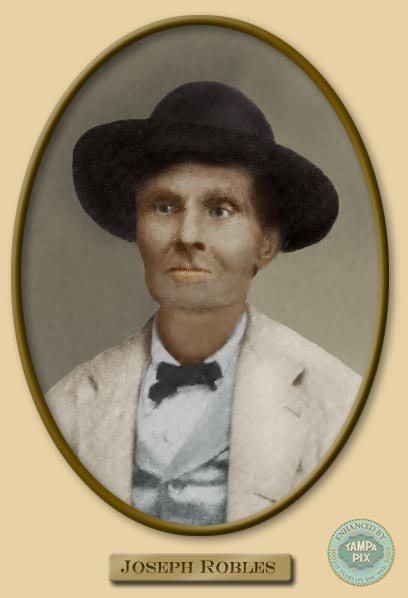 The
Robles are an old and important family in the history of the Tampa area.
Joseph Robles was an immigrant from Malaga in the Andalusia region of Spain, who came to the
United States in 1832 as a stowaway.
He jumped ship at
St. Mary's Island, and hid in a well until the ship left port according to
family tradition. He then went up into Georgia. Unable to speak English he
made signs to indicate he was hungry and would work for food. He lived
with the Michael Garrison family and worked on their farm for food and
shelter, and also learned to speak English.
The
Robles are an old and important family in the history of the Tampa area.
Joseph Robles was an immigrant from Malaga in the Andalusia region of Spain, who came to the
United States in 1832 as a stowaway.
He jumped ship at
St. Mary's Island, and hid in a well until the ship left port according to
family tradition. He then went up into Georgia. Unable to speak English he
made signs to indicate he was hungry and would work for food. He lived
with the Michael Garrison family and worked on their farm for food and
shelter, and also learned to speak English.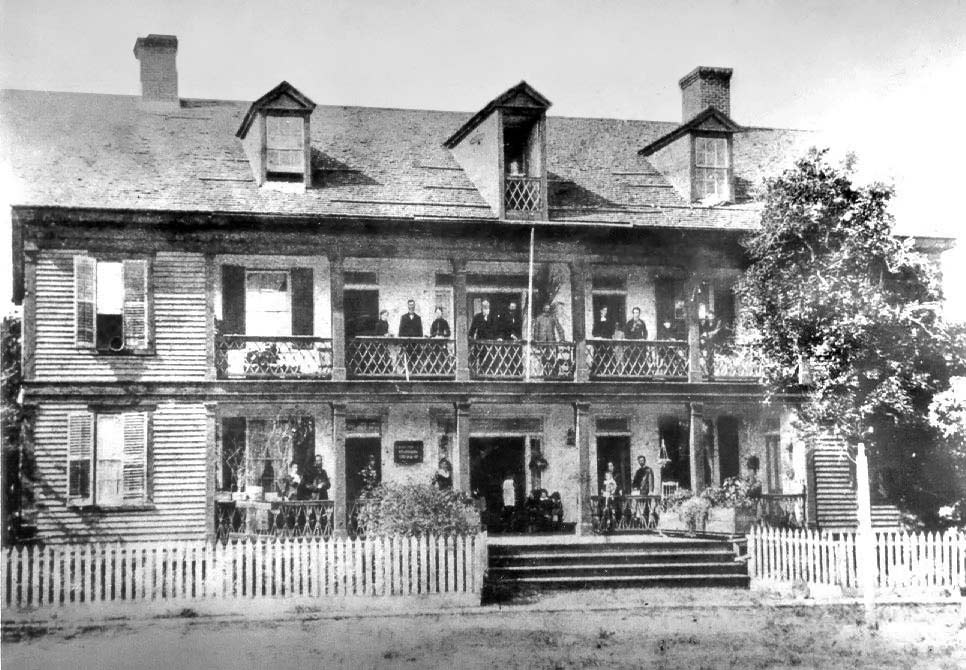

 In
1866, Hooker converted it into a hotel. Judge Henry L. Crane
and his wife, who operated the hotel in 1876, are
said to be standing on the left side of the second
floor porch. Poet Sidney Lanier has been
identified by contemporaries as the man standing on
the far right side of the second floor porch with his
leg propped on the rail. But D. B. McKay in the Tampa
Tribune, March 6, 1955, said Lanier is standing at the
left end of the first floor veranda. Located at 806
Madison Street.
In
1866, Hooker converted it into a hotel. Judge Henry L. Crane
and his wife, who operated the hotel in 1876, are
said to be standing on the left side of the second
floor porch. Poet Sidney Lanier has been
identified by contemporaries as the man standing on
the far right side of the second floor porch with his
leg propped on the rail. But D. B. McKay in the Tampa
Tribune, March 6, 1955, said Lanier is standing at the
left end of the first floor veranda. Located at 806
Madison Street. 